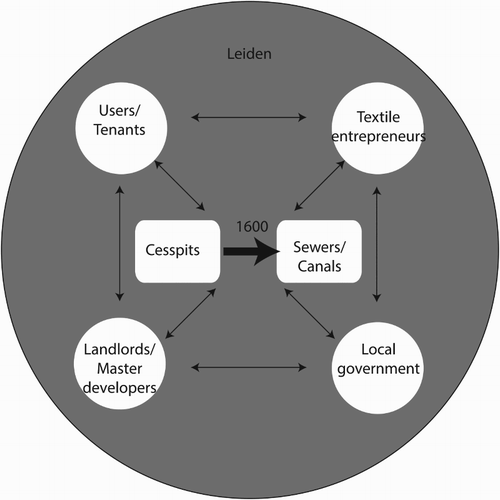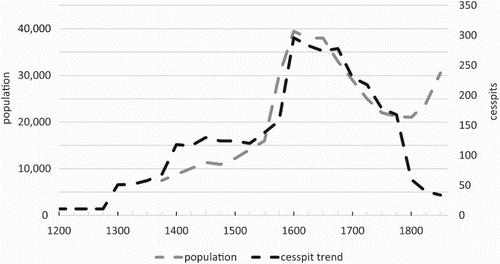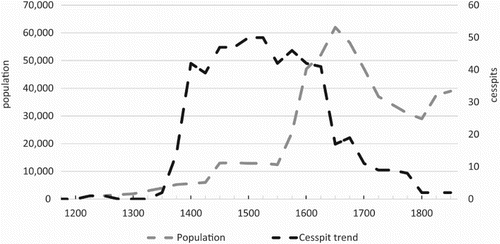Figures & data
Figure 1. Haarlem: a round, domed, brick-built cesspit. By permission of the Municipal Archaeological Service of Haarlem.
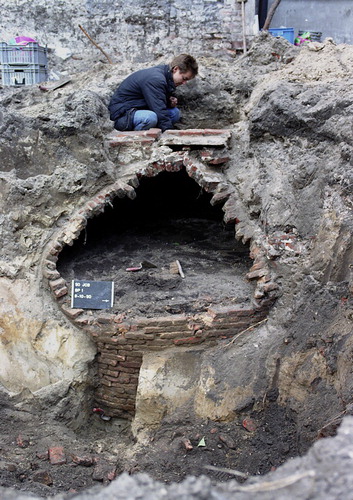
Figure 2. The Stakeholder model applied for the shift from sewers/canals to the pail system c. 1875. The arrows indicate the relationships between stakeholders and their shared vested interest in whichever system was used.
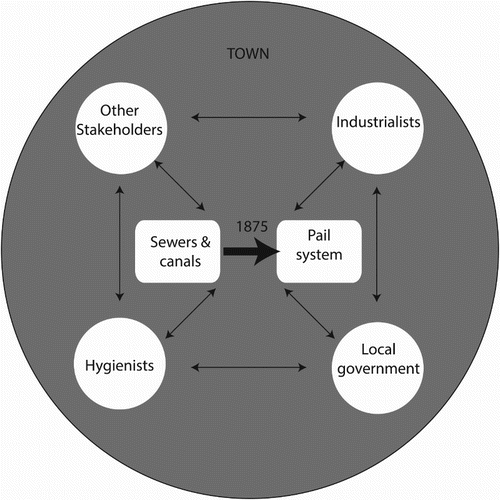
Figure 3. Population trends in Leiden and Haarlem, thirteenth–nineteenth century. For the data I refer to the tables in CitationVan Oosten (2015, appendices 4.1 and 4.2). The broken lines indicate that this graph is based on estimates made by historical demographers; exact figures are rarely available.
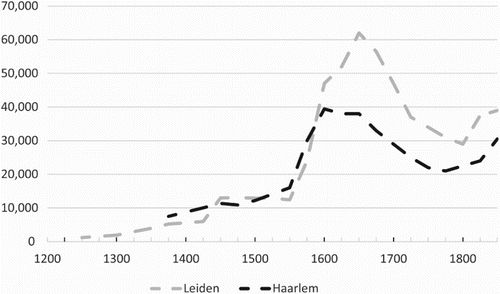
Figure 6. A brick-built sewer in Leiden, Langebrug excavation site. By permission of Bart Corver, IDDS archaeologists (Noordwijk).
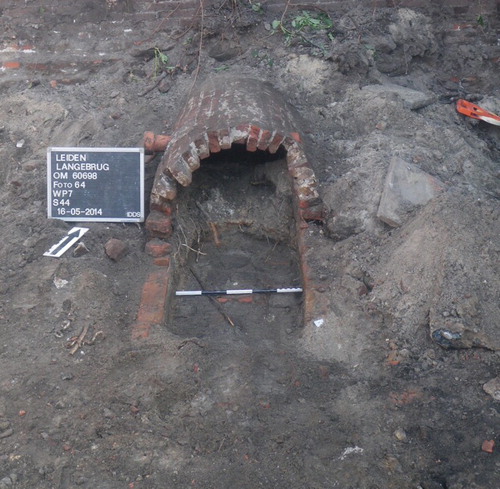
Figure 7. An artist's impression of three phases of urban development and human excrement management. Drawings by Carl van Hees (Leiden). (a) Haarlem or Leiden in the thirteenth century, a town with a rural character. In this phase, privies seem to be absent, i.e. there is no archaeological evidence of privies. A pile of dung is ready on the quayside/shore to be brought by barge to surrounding fields outside the town walls. (b) Haarlem or Leiden in the fifteenth century (‘the cesspit era’), when the town was small: for most of the century it had fewer than 10,000 inhabitants and a low population density. Privies are located in the rear of the yard or near the house. Nightmen collect waste in tubs and carry it from the cesspit to their barge. The water in the canal is relatively clean and is used as household or drinking water; breweries also drew their water from the canals in this period. (c) Leiden in the seventeenth century, a large town with about 50,000 inhabitants and a high population density. Privies no longer drain into cesspits. Brick-built sewers that run from the privy in the backyard or in the house are now embedded in the stone quay and drain the waste straight into the canal. Town dwellers dump human waste into the canal. The result is a great stink. Barges are now used to dredge the canals regularly, but the water in the canals is no longer fit for consumption. Brewers start to bring fresh water by ship; gradually consumers start to construct shared or private water wells in their yards.
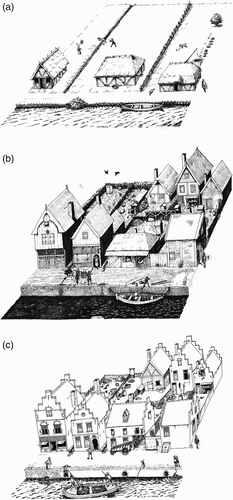
Figure 8. The proportion of tenants in Haarlem and Leiden in the sixteenth and seventeenth centuries. Sources: for Haarlem 1543: CitationBoeschoten & Van Manen, 1983: 526; for Leiden 1561: CitationNoordam, n.d..; for Leiden 1606: CitationPosthumus, 1939: 160–61; for Haarlem 1628: CitationAnnema, 1984.
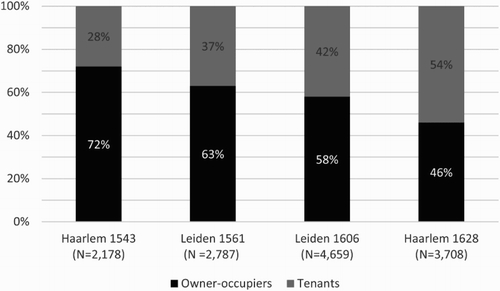
Table 1. Frequency and cost of emptying the cesspit of Sara de Haen, Rapenburg 48C, Leiden
Figure 9. The shift from cesspits to brick-built sewers in c.1600 in Leiden represented in terms of the stakeholder model. The arrows indicate that all the stakeholder groups were interrelated and that all had a vested interest in the waste-management system.
